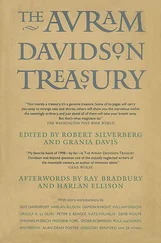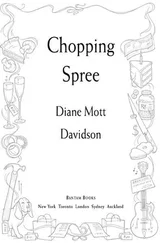
Victor, the Wild Boy of Aveyron
By a strange coincidence, a century and a half later, the premiere of François Truffaut’s film about Victor, L’Enfant sauvage , was showing in Los Angeles at exactly the same time as the discovery of America’s most notorious feral child. In December 1970, authorities in Los Angeles found a thirteen-year-old girl — later given the pseudonym Genie — tethered to a potty chair. She had spent her life since a baby naked and locked in her bedroom. Her father had forbidden his wife and son to speak to her and had barked and growled at her like a dog to keep her quiet. She had been fed a diet of milk and baby food and wore a nappy. When Genie was found, she couldn’t straighten her arms or legs and didn’t know how to chew or control her bladder or bowels. And she was almost entirely mute.
Genie became the subject of intense interest amongst linguists and behaviourists. Here was a young teenager who had missed out on the crucial stages of language development as a child. Studying Genie might finally answer questions about whether we have an innate ability to speak or whether we learn from our environment, and whether we can learn language at any time or only when we are young. Over the next six years Genie had intensive language training and testing. She learned some words and was good at non-verbal communication but she was never able to put words into a logical order (‘applesauce buy store’) and construct meaningful sentences. Despite evidence of an innate intelligence, she spoke at about the level of a two-year-old: ‘want milk’. Her lack of progress seemed to prove Chomsky’s theory that the innate left-brain capacity to learn language must be developed before the onset of puberty or it becomes unable to function for language acquisition.
Genie was fought over by psychologists, linguists, social services and her natural mother. But in the end, as she remained unable to master the basics of language, the researchers lost interest in her. It was the abandonment of Victor all over again. Today Genie is believed to be living in an adult care home somewhere in Southern California. She is still unable to speak in meaningful sentences.
It was no coincidence that Victor, the wild boy of the French Revolution, landed up in the newly established hospital for deaf mutes in Paris, where for the first time sign language was being taught (using the system created by Abbé de l’Epée half a century earlier). What is apparent with Victor — and with Genie — is that the ability to talk is not the same as the ability to communicate using language. Speech is only one part of the complex thing we do when we communicate. Sign language — using visual signs rather than patterns of sound to express our thoughts — provides a different insight into how language evolves.
There are hundreds of sign languages around the world. From Bolivia to Finland, Somalia to Brunei, intricate systems of hand shapes, body movements and facial expressions exist wherever there are deaf communities. There’s even international sign language — Gestuno.
Sign languages develop independently from their oral counterparts. The British and Americans may speak a common English but they have two quite different sign languages. Isolated deaf communities tend to evolve their own unique languages. Early settlers to Martha’s Vineyard off the coast of Massachusetts carried a gene for deafness. Soon there were so many deaf people on the island that the inhabitants developed their own sign language; by the nineteenth century hearing people moving into the area had to learn sign language in order to live in the community. The language eventually merged with mainland signs to form the American Sign Language. Yucatec Maya is signed in isolated villages in south central Yucatan in Mexico; Kata Kolok is the language signed in two neighbouring villages in northern Bali, Indonesia. And 150 members of the Al Sayyid Bedouin tribe in the Negev Desert of southern Israel (where the rate of deafness is fifty times the norm) have a sign language with a unique grammatical and linguistic structure uninfluenced by local Arab or Hebrew spoken language patterns.

Sign language varies from country to country
The first historical record in Britain of signing was of a Leicester wedding ceremony on 5 February 1576 between one Thomas Tilsye, deaf and dumb since birth, and Ursula Russell. Thomas made his wedding vows to his intended by a series of gestures, including the tolling of a bell for ‘till death do us part’. As the vicar of St Martin’s Church wrote in the parish register:
First he embraced her with his armes, and tooke her by the hande, put a ringe upon her finger, and layde his hande upon his harte, and upon her harte, and helde up his hands towards heaven; and then to shew his continuence to dwell with her to his lyves ende, he did it by closinge of his eyes with his hands, and diggine out the earthe with his fote, and pullinge as though he would ring a bell.
Thomas Tilsye’s hand gestures were not sign language; his mimicking of actions and pointing to objects do not constitute a true language with its own syntax and grammar. But other anecdotal records from the sixteenth century onwards reveal evidence of simple deaf languages evolving in deaf communities in Britain. In his 1602 Survey of Cornwall , Richard Carew wrote about a young deaf man, Edward Bone, the servant of the local MP. Bone could lip-read but not speak. Carew describes how he could relay information to his master with an elaborate system of gestures but later, when he met up with his a deaf friend, he used a completely different signing style.
[The] two, when they chanced to meet, would use such kind embracements, such strange, often, and earnest tokenings and such hearty laughters and other passionate gestures, that their want of tongue seemed rather a hindrance to others conceiving them than to their conceiving each other.
The diarist Samuel Pepys described having dinner with his friend Sir George Downing (after whom Downing Street was named) on 9 November 1666, when a deaf servant had a conversation in sign language with his master about a fire in Whitehall: ‘there comes in that Dumb boy that I knew in Oliver’s time, who is mightily acquainted here and with Downing, and he made strange signs of the fire and how the King was abroad, and many things they understood but I could not’. Downing had been to school in Kent, in a community where congenital deafness was rife. Could he have learned Old Kent Sign Language, an extinct deaf sign language thought to have existed in the county at the time? Was his servant Kentish or did Downing perhaps teach OKSL to him?

Abbé Charles-Michel de l’Epée set up the first school for the deaf
The written history of sign language began in the seventeenth century in Spain. In 1620, a priest, Juan Pablo Bonet, published a ground-breaking book, Reduction of Letters and Art for Teaching Mute People to Speak . In it he set out a system for using a signed alphabet to teach deaf people. A century later, the French priest Abbé Charles-Michel de l’Epée set up the first public school for deaf children. Abbé de l’Epée had first come across deaf people when he was invited by a parishioner to administer Communion to her two daughters. He apparently mistook the silence of the two little girls for rudeness; when he found out they were deaf, he was inspired to find out more about how other deaf people communicated. He observed the rudimentary signing being used by the sisters and by other deaf people in Paris; from that — and drawing upon Bonet’s signed alphabet — he developed a standardized system of sign language which he then taught in the world’s first school for deaf children.
Читать дальше















